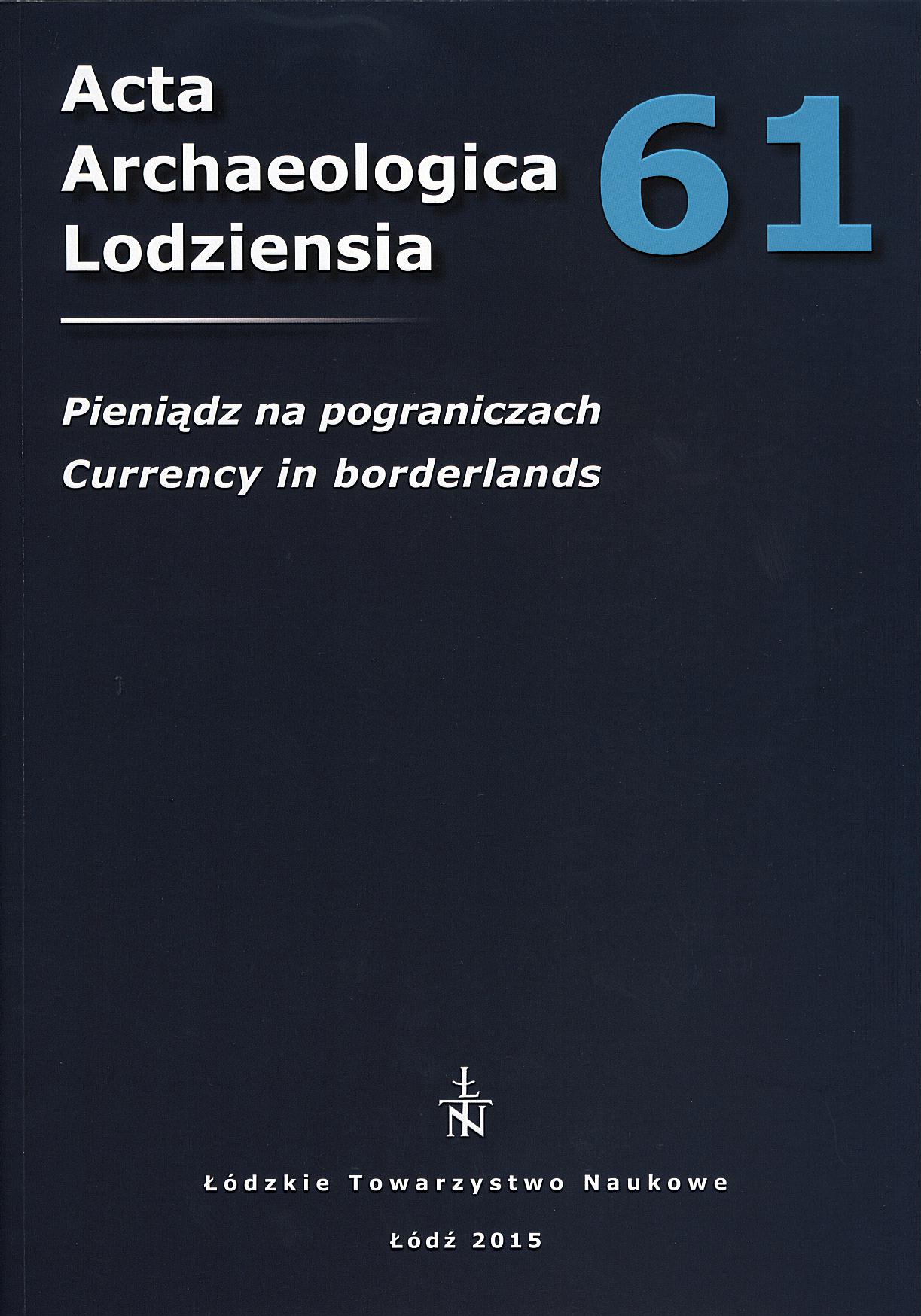Między Bliskim Wschodem a Grecją – pieniądz w okresie archaicznym
Between the Near East and Greece – currency in the Archaic period
Author(s): Aleksandra JankowskaSubject(s): History, Archaeology, Cultural history, Ethnohistory
Published by: Łódzkie Towarzystwo Naukowe
Keywords: Archaic Greece; Near East; invention of coinage; polis; Aristoteles; archaiczna Grecja; Bliski Wschód; wprowadzenie monety; polis; Arystoteles
Summary/Abstract: As early as the third millennium BC, silver began to play the role of a privileged commodity and as reserve of value in Egypt and in the kingdoms of the Near East. In the second millennium and increasingly in the first millennium, silver was used not only as a reserve and measure of value but, what is more significant as an instrument of payment. Whether archaeological or textual, the evidence from the Mesopotamian states and from the Levant shows that silver was increasingly used as a monetary instrument at that time. The so-called Hacksilber is found in more than thirty hoards in the Levant in the Iron Age Period. This can partly demonstrate that the fundamental concepts of money were established in the Near East long before the Greeks and the Lydians adapted them and, above all, transformed these into the form of coin, in the 6th century. This great transformation, as well as the vast historical question of the emergence of coinage was directly related to the evolution of institutions bound up with the emergence of the polis. Znaleziska srebrnych skarbów z terenu Lewantu, datowanych na okres między X a VI w. p.n.e. dostarczyły interesującej perspektywy w rozważaniach nad początkami monety greckiej. Przeprowadzone badania metalograficzne wykazały, że przynajmniej jeden ze wspomnianych skarbów został wytworzony ze srebra pochodzącego z Laurion, Sifnos i Chalkidiki. Przybicie stempla na fragmencie metalu o określonej masie, ustanowione około 600 r. p.n.e. w cywilizacyjnym tyglu reprezentowanym przez położone w zachodniej części Azji Mniejszej greckie państwa – miasta i królestwo Lidii, dopełnia ekonomicznego obrazu świata, w którym ważenie metalu było stałą i doskonale poznaną praktyką. Fundamentalna różnica tkwiła jednak w greckich poszukiwaniach nowych form rządzenia i administracji. Pieniądz w postaci monety wypełnił bowiem tak symboliczne jak i funkcjonalne potrzeby polis jako instytucji i jej mieszkańców.
Journal: Acta Archaeologica Lodziensia
- Issue Year: 2015
- Issue No: 61
- Page Range: 7-12
- Page Count: 6
- Language: Polish

